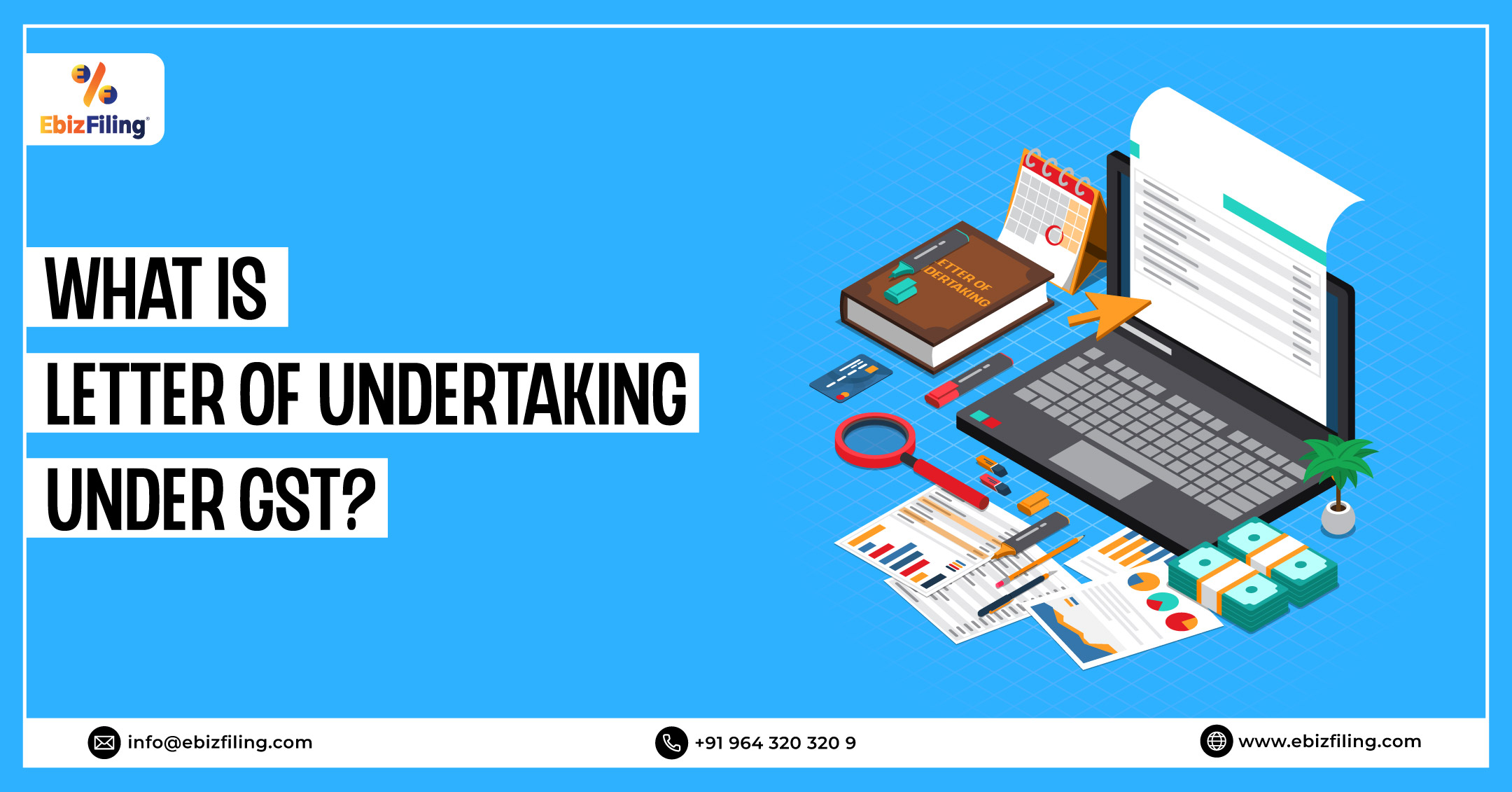
-
October 15, 2022
What is a Letter of Undertaking under GST? And Process for filling LUT under GST
Introduction
To export goods or services without paying IGST (Integrated Goods and Service Tax), all registered taxpayers who do so must submit a Letter of Undertaking (LUT) in GST RFD-11 form via the GST portal. Today this article will focus on “What is Letter of Undertaking under GST?”, Process for filling LUT under GST, Documents required for LUT under GST, and Eligibility criteria for filing LUT under GST (Goods and Service Tax).
What is Letter of Undertaking under GST?
Exporters might use a letter of undertaking to export products or services without paying taxes. All exports are subject to IGST under the new GST system, which can later be reclaimed via a refund against the tax paid. Exporters can avoid the hassle of seeking a refund and avoid the blockage of cash through tax payments by using a LUT (Letter of Undertaking).
Eligibility criteria for filing LUT under GST
All GST-registered exporters of goods and services must file a GST LUT. Exporters who have been charged with a crime or committed tax evasions totaling more than INR 250 lakhs under the CGST Act, the Integrated Goods and Services Act of 2017, or any other applicable legislation are ineligible to submit a GST LUT. They would need to provide an export bond in these circumstances.
Any registered person may submit an export bond or LUT under GST RFD 11 in accordance with the CGST Rules, 2017 without having to pay the integrated tax. They may apply for LUT if;
- They are GST-registered and plan to provide goods or services to India, other countries, or SEZ (Special Economic Zone).
- They want to sell items without having to pay the integrated tax.
How exporter will be benefited from Letter of Undertaking under GST?
- Regular exporters benefit greatly from filing LUT online because the reimbursement process via another way is time-consuming.
- It is not necessary for the applicant to appear in front of the officials for approval. The entire process can be completed faster and in a simple way.
- If an exporter files a LUT under GST, they can export goods or services without paying taxes.
- The Letter of Undertaking is valid for the whole financial year in which it was filed.
Documents required for Letter of Undertaking (LUT) under GST
- PAN Card of an entity
- IEC Code Certificate
- LUT Cover Letter – acceptance request and signed by an authorized person
- GST RFD11 Form
- GST Registration
- KYC of Authorized Person
- Cancelled Cheque
Process for filling LUT under GST
- Visit to the GST Portal and Login with your valid credentials
- Click on the Service tab and from there click on user service select furnish Letter of Unertaking (LUT) command
- The GST RFD-11 form is shown. From the LUT Applied for Financial Year drop-down list, choose the fiscal year for which LUT is requested.
- For the previous LUT to be uploaded, click the Choose File button.
Important Note:
- The only acceptable file types are PDF and JPEG.
- There is a 2 MB limit on file size for upload.
- Check the boxes next to the declarations.
- Enter the names and addresses of two witnesses under “Name, Address, and Occupation of Independent and Reliable Witnesses.”
- Enter the location in the Place of Filing LUT field.
- Choose the name of the authorised signatory from the Name of Primary/Other Authorized Signatory drop-down list.
- Enter the location where the form will be filed in the Place field.
- Click the SAVE button to save the form if you wish to save it and retrieve it later.
- When an application is successfully saved, a confirmation message is shown.
- To view a preview of the form, click Preview.
- Once the above step is completed. The next thing you need to do is click on Sign and file with DSC (Digital Signature Certificate) or Sign and file with EVC Button.
- Once the above step is completed, click on the Proceed button.
- A message will appear on the screen regarding the successful submission of a form.
- Once it done you can click on the download button to download acknowledgement for LUT.
Conclusion
To export products, services, or both without paying IGST, LUT must be provided. Exporters are required to pay IGST or post an export bond if they don’t furnish the LUT. In the past, LUT could only be submitted in person at the relevant GST office. But the government has made LUT filing online in order to make the procedure more simpler.
Letter of Undertaking under GST
All registered tax payers who export the goods or services have to furnish Letter of Undertaking (LUT) in GST RFD-11. File with Ebizfiling.
About Ebizfiling -










Reviews
Deepika Khan
29 Sep 2018I would rate 5/5 for their services, pricing and transparency.
Ishwar Prasad
18 Apr 2022I took trade mark registration from Ebizfiling india private limited thank you for registration and service was excellent and received the certificate from Anitha KV.
madhu mita
24 Aug 2021It's an awesome experience with Ebizfiling India Pvt Ltd. My special thank you to LATA Mam and i really appreciate her for the services she provide. LATA Mam is so cooperative always and always ready to help and solve any query related to their services.The way they communicate as per the time schedule is really awesome and satisfying, This is second financial year we are connected with Ebizfiling for Annual Returns filing as I really like their work culture, every employees are so cooperatives and available to respond any query whenever needed.Thank you so much to Ebizfiling Team!
December 23, 2025 By Steffy A
Why SaaS Companies Need OIDAR Registration in India? Introduction SaaS businesses today scale faster than borders allow. Many global SaaS companies serve Indian users without any physical setup in India. That is exactly where OIDAR compliance becomes relevant. At […]
December 19, 2025 By Dhruvi
GSTR-5A Explained: What It Is and Why It Matters? Introduction When people hear the word GST, they usually assume it applies only to Indian businesses. Many foreign companies believe that if they are not registered in India or do not […]
December 18, 2025 By Steffy A
Why Foreign Influencer Platforms Need OIDAR Registration? Let’s Begin Let’s begin. Foreign influencers today reach Indian audiences through apps, portals, and digital platforms, earning revenue via subscriptions, commissions, and brand campaigns. When digital services are provided to users located in […]